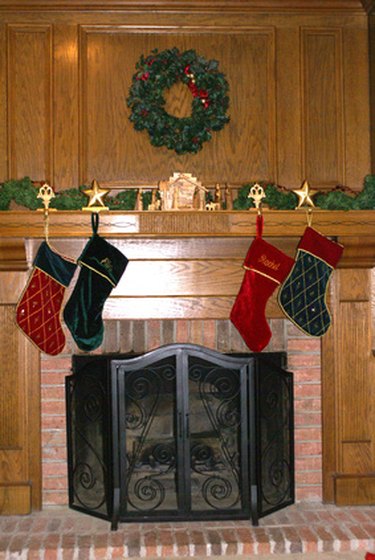
A wood-burning fireplace provides a source of heat and ambiance for a home during the cool months. Building codes require a hearth pad to protect the hearth--the floor or raised area in front of a fireplace--from any sparks or embers that may escape from the fireplace box while a fire is burning. The hearth material must be requirements for materials, size and location.
Material
Video of the Day
To properly protect the fireplace hearth from being burned or ignited by sparks from the fire, a hearth pad (also called a hearth extension) must be constructed of a noncombustible material. Brick, tile, stone and concrete are all acceptable materials.
Video of the Day
Thickness
According to www.Rumford.com, building codes require a fireplace hearth to be at least 4 inches thick. A hearth extension must be at least 2 inches thick. However, the hearth extension material can be just 3/8 inch thick if the bottom edge of the firebox opening is at least 8 inches above the hearth extension.
Hearth Location
A hearth or hearth extension is required whether the fireplace is at floor level or elevated. For an elevated fireplace, the hearth must be raised so it is directly under the firebox opening; if the hearth for an elevated fireplace is installed at floor level, it must extend 20 inches outward from the fireplace's face wall.
Hearth Size
The size of the hearth or hearth extension is directly related to the size of the firebox. Measured from the firebox opening, the hearth must extend 16 inches in front of the fireplace and at least 8 inches on each side. If the firebox has an opening of greater than 6 square feet, the hearth pad must extend 20 inches in front of the firebox and 12 inches from each side to maintain a properly protected area.